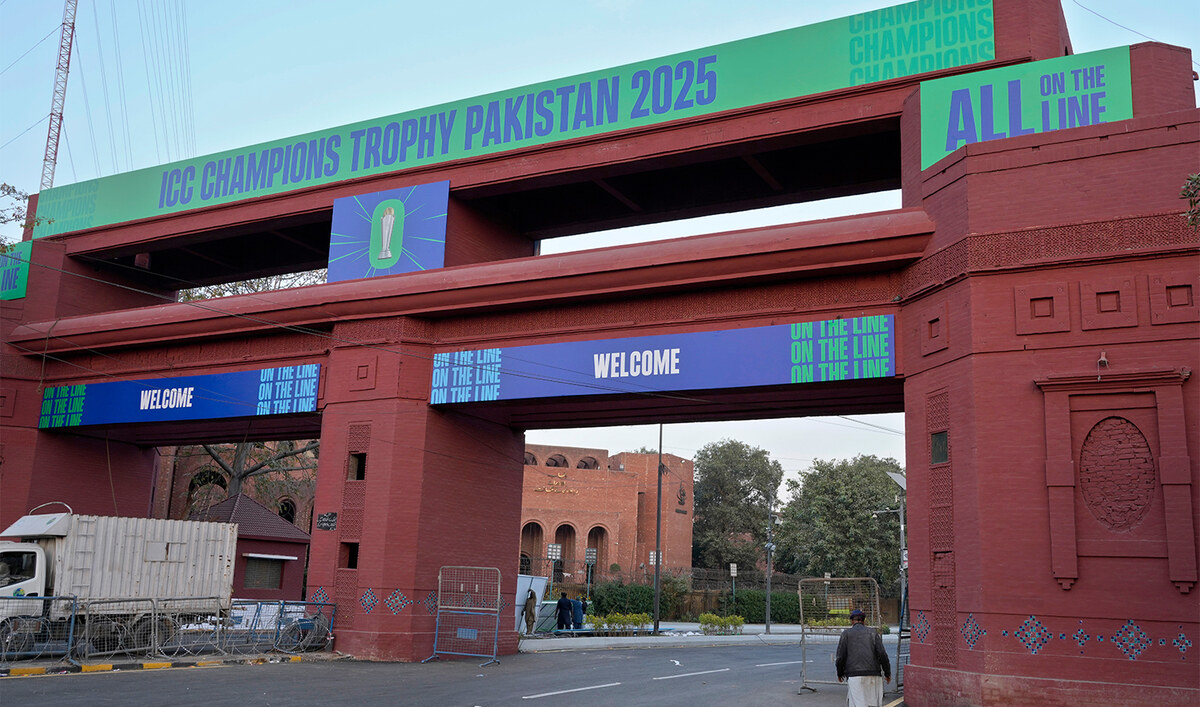KARACHI: Landing in Karachi yesterday morning, the excitement was palpable. The city has been transformed into a carnival of cricket, with banners on buildings and faces beaming with anticipation.
There were concerns about the readiness of the venues, but the National Stadium has been renovated in a short space of time. It stands ready for its moment in the spotlight.
Today, when Pakistan faces New Zealand in the tournament opener, it will be more than just another cricket match. It will be the end of a 30-year wait to host a major tournament. A generation of cricket fans can finally get behind their stars on the big stage at home.
The lead up to the tournament has involved many challenges, not least India’s unwillingness to travel to Pakistan. Eventually, the parties compromised and settled on a hybrid option. But even this does not seem to have dampened the spirit in Pakistan.
Praise is due to Wasim Khan, a man who will be at the stadium for the opening match in his current role with the ICC. As CEO of the Pakistan Cricket Board until September 2021, he laid the foundation for the country to host this trophy. His advocacy and relationships were vital in the convincing the world Pakistan could step up as host, and the next few weeks will be a statement that it is back and ready.
Turning to matters on the pitch, who are the favorites and which players will shine? In my opinion, this is one of the most open tournaments in recent memory. Over 19 action-packed days, eight of cricket's finest men’s teams will battle it out in what promises to be a fascinating sprint format which leaves little room for error.
The tournament’s compact nature is its secret weapon. Unlike the marathon of a World Cup, the 19day timeframe means teams need to hit the ground running. One bad day could spell a disastrous exit from the competition; a moment of brilliance could change fortunes.
The eight teams are split into two groups. Group A features Pakistan, India, Bangladesh and New Zealand, whilst Group B throws together Australia, England, Afghanistan and South Africa. Each team faces their group opponents once, with the top two from each advancing to the semifinals.
What makes this edition particularly compelling is the level playing field. Australia, typically a powerhouse, enters the tournament without their first-choice pace attack — Pat Cummins and Josh Hazlewood are managing injuries, while Mitchell Starc has withdrawn. Add to this the loss of Mitch Marsh with a back issue and, suddenly, the defending ODI world champions look vulnerable, although they should never be ruled out.
The tournament’s split hosting between Pakistan and Dubai adds another fascinating layer. India’s matches are all scheduled for Dubai, creating an interesting dynamic where they will enjoy significant support without the pressure of home conditions. The Dubai International Cricket Stadium has become something of a second home for Indian cricket, potentially giving them a subtle edge. This, coupled with their depth and spinning options, makes them slight favorites.
England’s aggressive brand of cricket makes them dangerous but unpredictable in this format, while New Zealand can never be discounted. Pakistan, playing mostly at home, will be formidable, and South Africa’s bowling attack makes them serious contenders. Afghanistan, with their spin-heavy attack, feel ever closer to a big moment.
Only Bangladesh, struggling to find consistency at the top level, seem out of their depth. Nevertheless, in a 19-day tournament where momentum is everything, even they could string together three good days and find themselves in a semifinal.
In terms of players to look out for, I expect Jake Fraser-McGurk to announce himself as cricket’s next superstar. The tournament format suits his aggressive style perfectly. Noor Ahmed, well-travelled in the franchise leagues at 20 years of age, might finally make his mark in this format.
The injury-hit Australian pace attack opens the door for their next generation. I will be watching to see if Spencer Johnson becomes this tournament’s surprise package. Pakistan’s Shaheen Shah Afridi, especially in home conditions, could make the difference in tight matches.
This Champions Trophy feels different. The compressed schedule, the split venues and no standout team has created perfect conditions for drama. On March 9, we will have the answer. As of now, any of seven teams could realistically lift the trophy.
Holders Pakistan have a team with determination in their eyes and can feel the energy of a nation willing them on.
When the first ball is bowled at the National Stadium, it will not just be about cricket. It will be about redemption, coming home, a nation’s love affair with a sport that never wavered, even in the darkest times. As the sun set over Karachi last night, casting long shadows across the practice nets where a few children still played, it was difficult not to feel that something magical was about to unfold.
For now, though, the city holds its breath, waiting for the start. Cricket is coming home and Karachi is ready to welcome it with open arms.

























